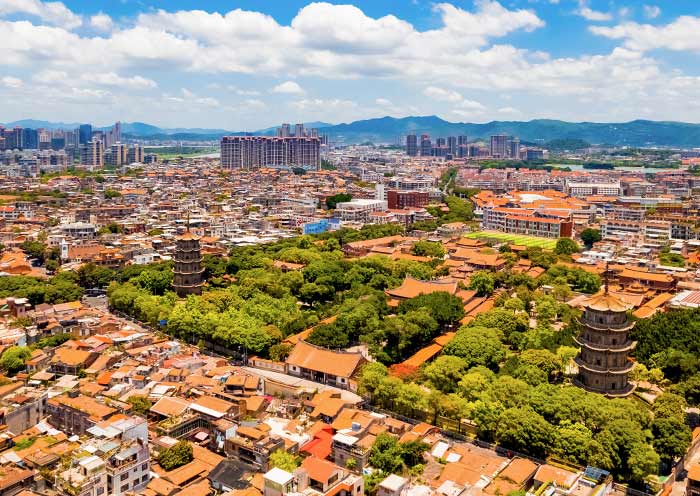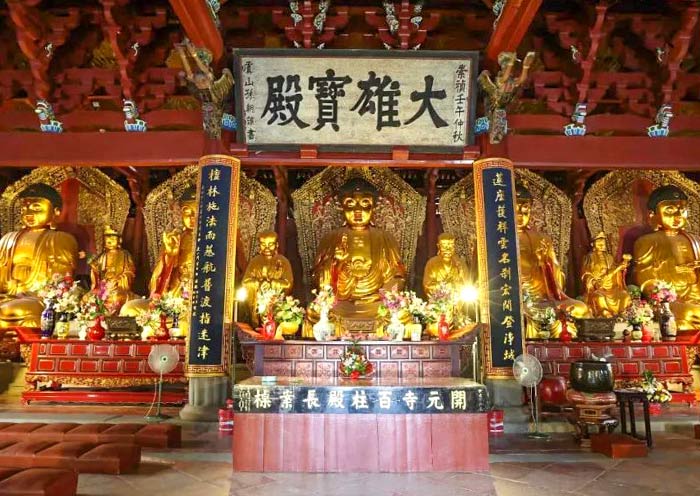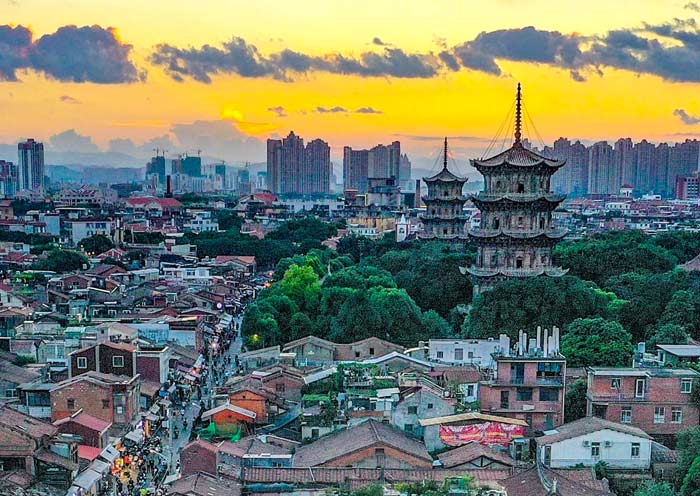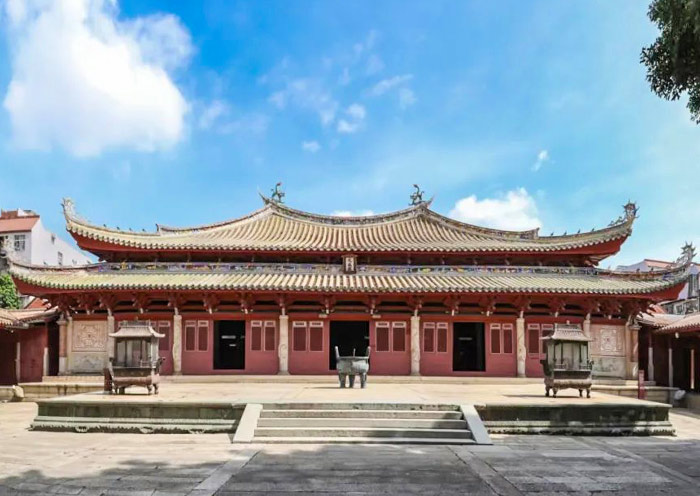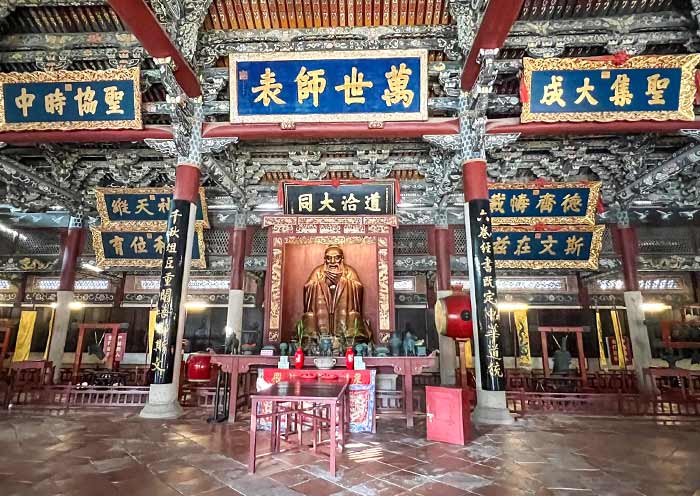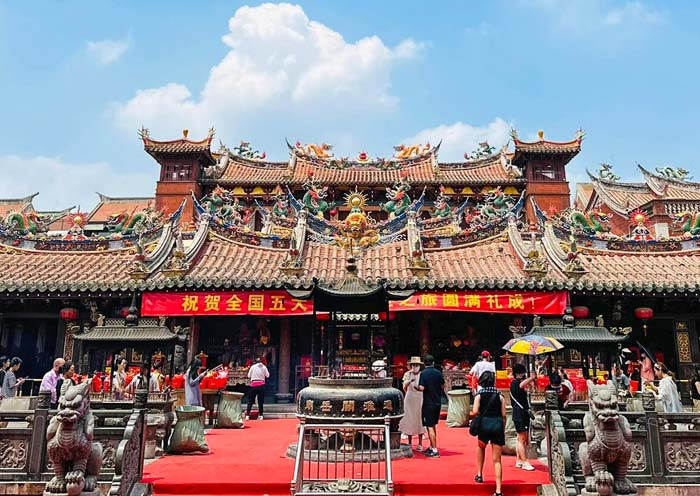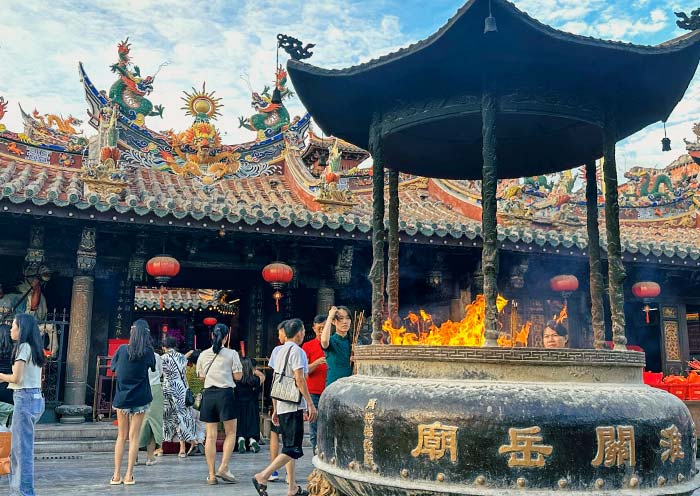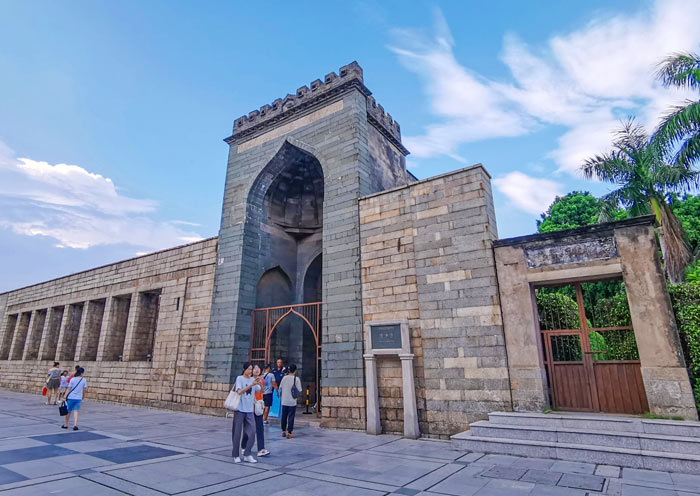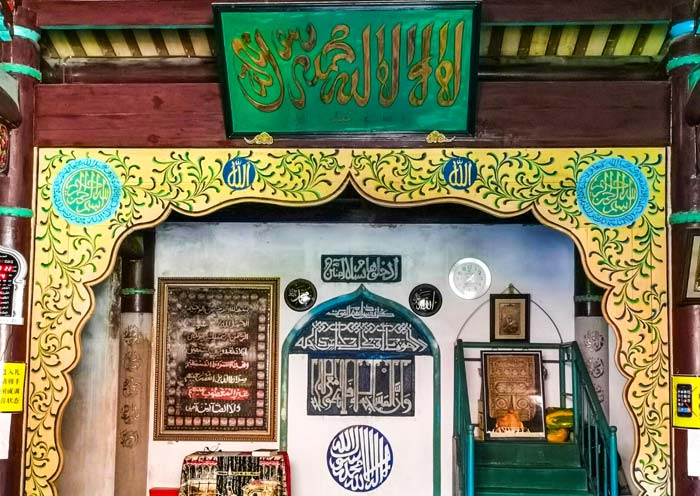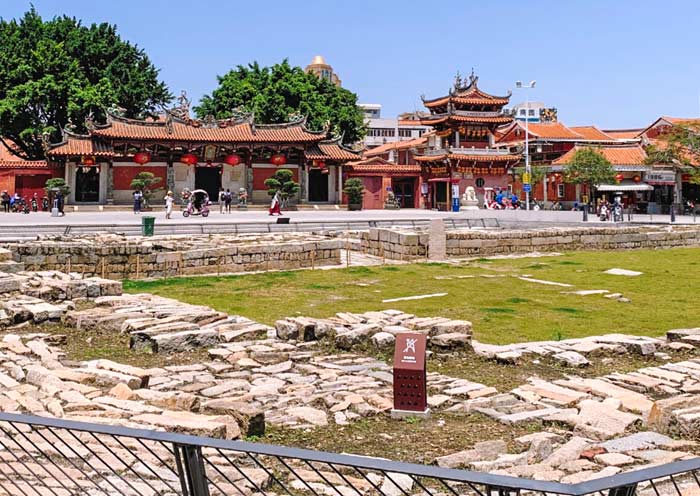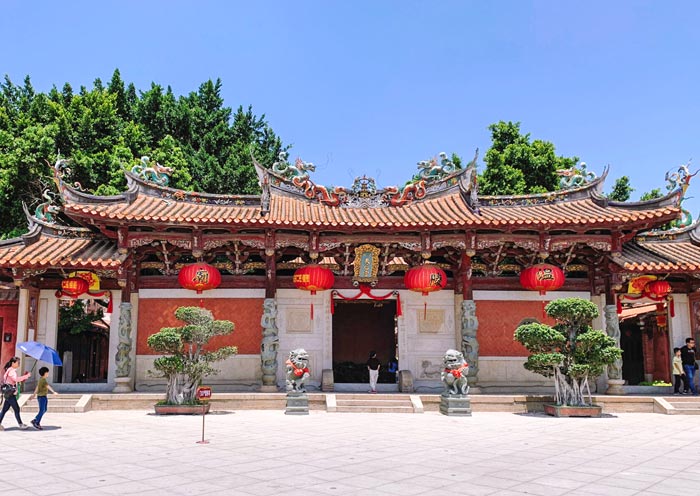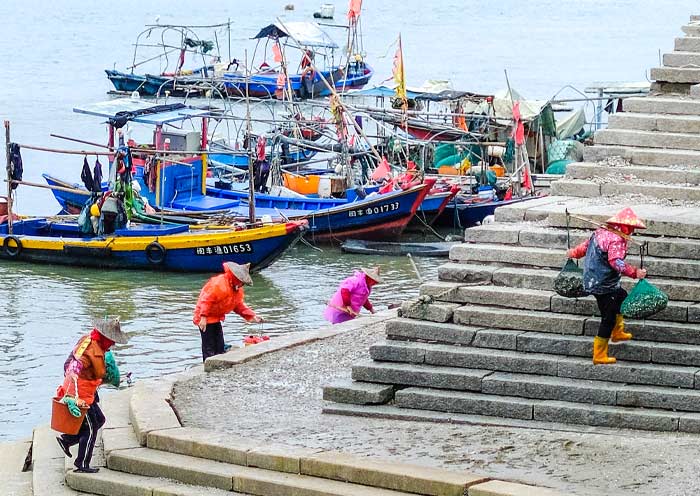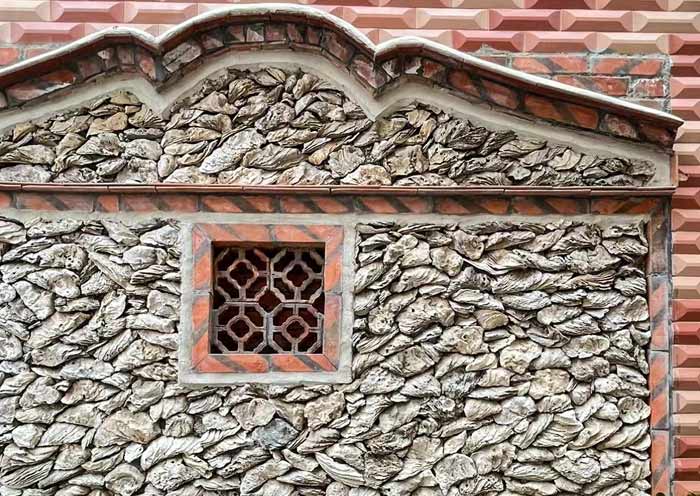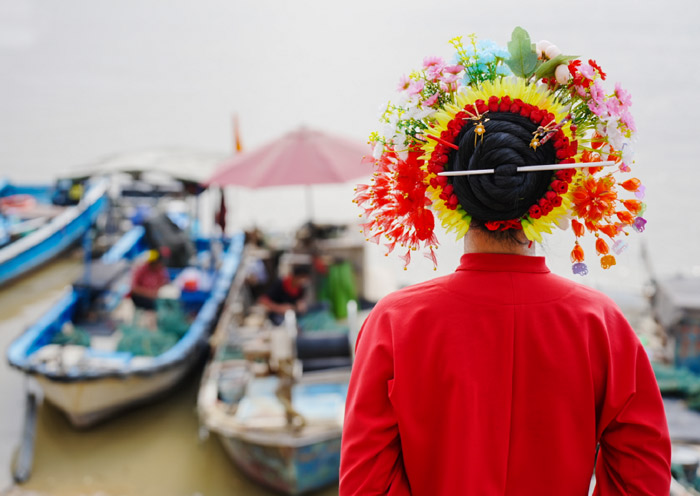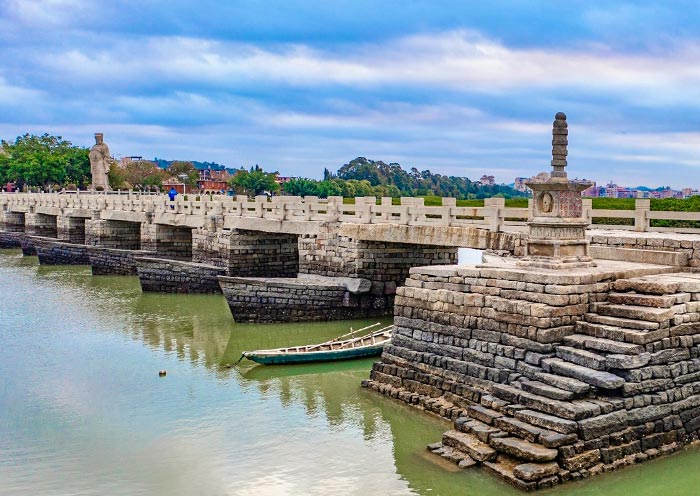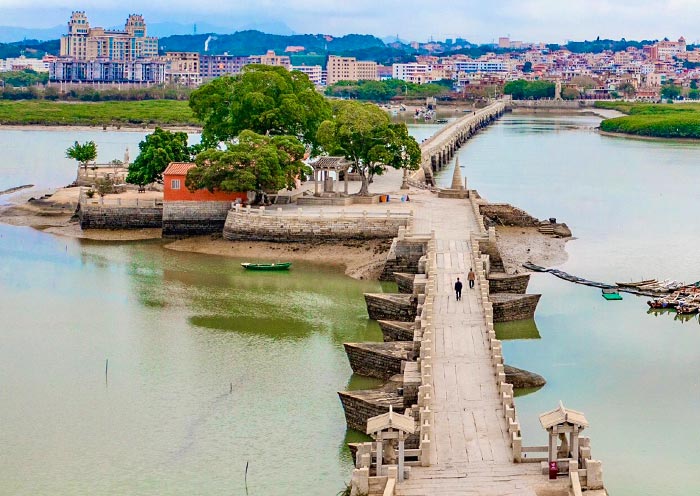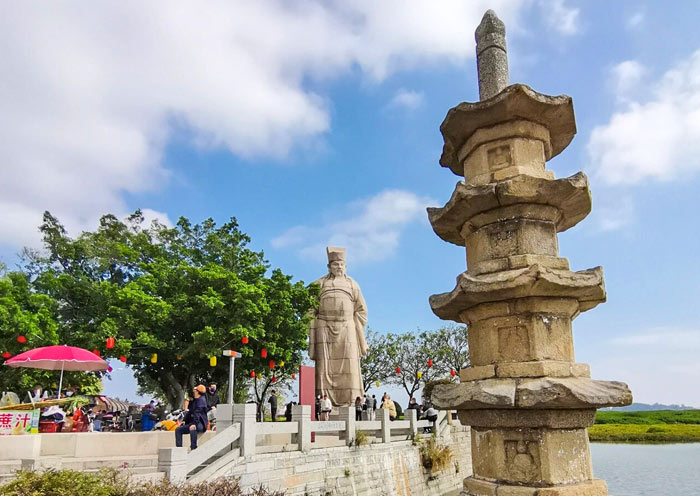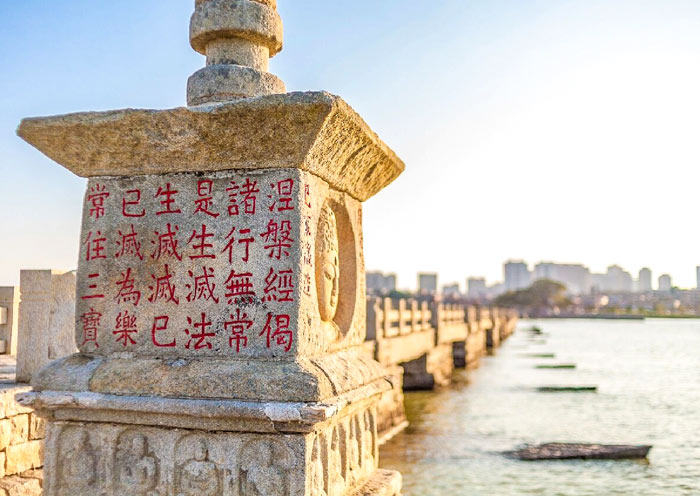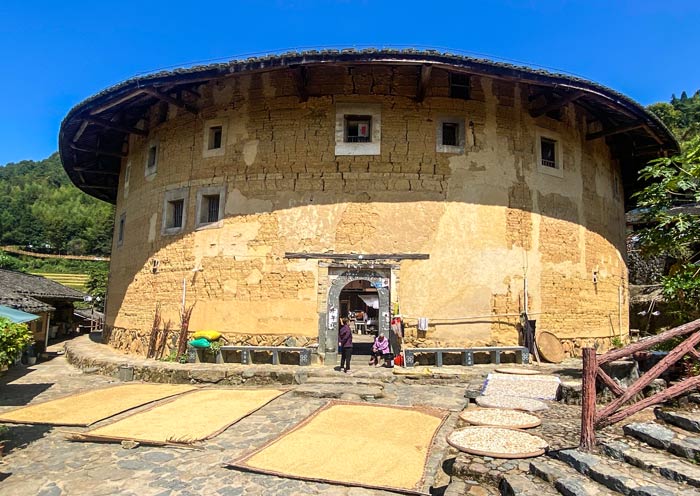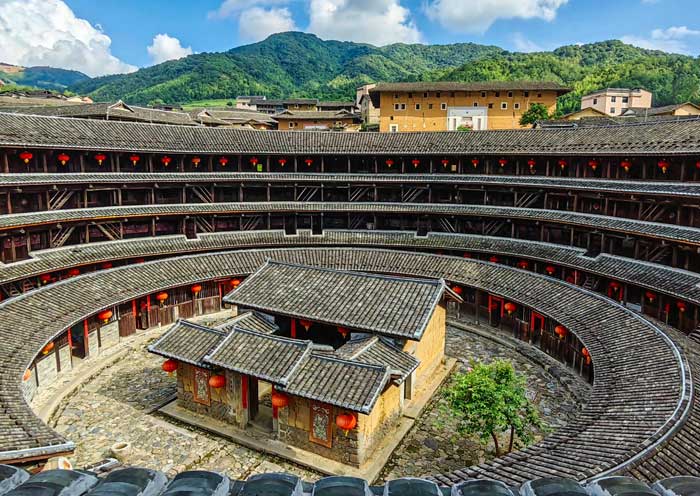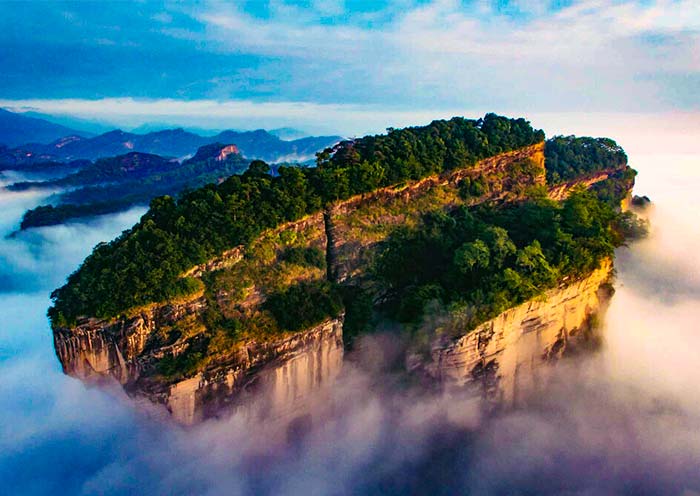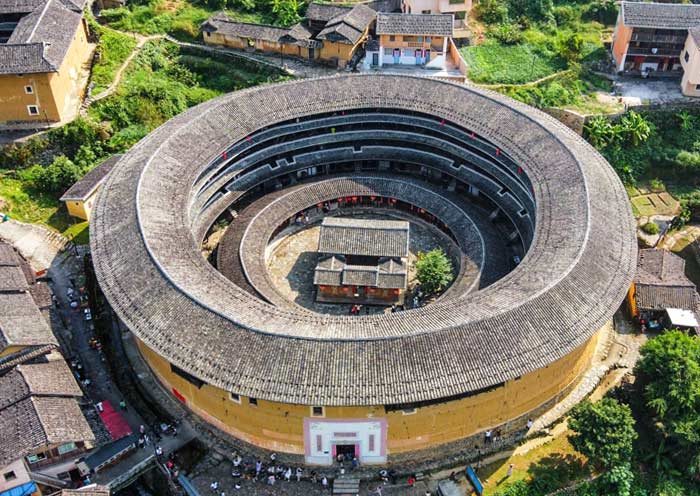Highly recommended for families seeking history and nature. The desert experience at Shapotou was unforgettable, and seeing the massive Western Xia Tombs gave us a real history lesson. The highlight was tasting the excellent wine at Xige Winery—a pleasant surprise in China's west! The tour was well-organized, and the guide and driver were exceptional, ensuring a smooth and enjoyable journey.
- Highlights
- Itinerary
- Price
- Trip Notes
- Accommodation
- Photos
- Reviews
Where is the starting point of the Maritime Silk Road? It is Quanzhou, Fujian, China. Have you heard of the name Zayton or Zaiton City (Zaiton Harbour)? Why is Zaiton, the old name of Quanzhou, so famous outside of China? Why was Quanzhou hailed as "The City of Light" by Jacob D'Ancona? Why is it marked by Marco Polo as "The Most Prosperous City in the World", "the Alexandria of the East", and "the Largest Port in the World"? Join us on our 1-Day Quanzhou Tour from Xiamen to follow in Marco Polo's footsteps and explore the City of Light. Discover Quanzhou: the Emporium of the World in Song-Yuan China, as we take you on a World Heritage Tour through a Quanzhou Citywalk at the starting point of the Maritime Silk Road.
Nowadays, the name Quanzhou represents the 56th World Heritage Site of China. However, over 1,000 years ago, during the Song and Yuan Dynasties (960-1368), its old name, Zaiton City, was well-known by sailors and traders home and abroad. In Zaiton (Quanzhou), you can encounter many stories of saints and immortals, such as Marco Polo, Jacob D'Ancona, Master Hongyi (Li Shutong), Zheng Zhilong (the father of the national hero Zheng Chenggong), Huang Shougong (who offered the land to build the Kaiyuan Temple), Wu Lu (the last top scholar in Fujian), Confucius (Kongzi, a philosopher and teacher), Arab merchants (who brought Islam to China), Guan Yu (a famous general of the Three Kingdoms period), Yue Fei (a renowned military general and national hero of the Southern Song Dynasty), Mazu (Linmo, the goddess of the sea), Xunpu women (famous for the unique headwear called "Zan Hua"), Cai Xiang (the supervision of ancient Quanzhou who built the Luoyang Bridge) ...
You can take a Quanzhou Citywalk through the top three must-visit streets, namely West Street, Zhongshan Road, and Tumen Street, to visit the top attractions of Quanzhou. These include Kaiyuan Temple (Buddhism), Quanzhou Confucian Temple (Confucianism), Qingjing Mosque (Islam), Guandi Temple (Taoism), Mazu Temple (Taoism), as well as optional visits to Luoyang Bridge or Xunpu Village. While exploring these places, you can learn why Quanzhou was once called the Land of Buddha, where saints filled every street. Quanzhou is known to be home to over 6,000 temples and more than 500 deities. In this Museum of World Religions, you can witness the peaceful coexistence of Taoism, Buddhism, Islam, Catholicism, Hinduism, Christianity, Manichaeism, and Judaism. As the hometown of overseas Chinese, Quanzhou is also a must-visit destination for people of Chinese origin to reconnect with their ancestral roots. Don't forget to immerse yourself in the local Hokkien Culture by experiencing Minnan Architecture, savoring the delicious Hokkien food, and enjoy local Hokkien songs.
Contact us to start your 1 Day Quanzhou Tour From Xiamen. Follow Marco Polo & Explore The City of Light with us now.
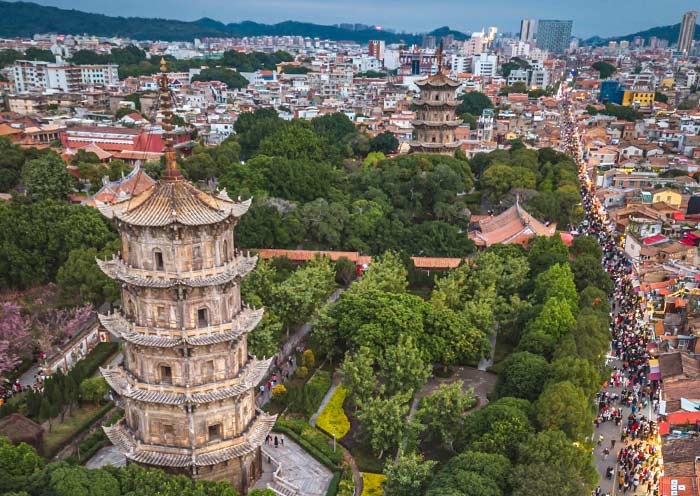
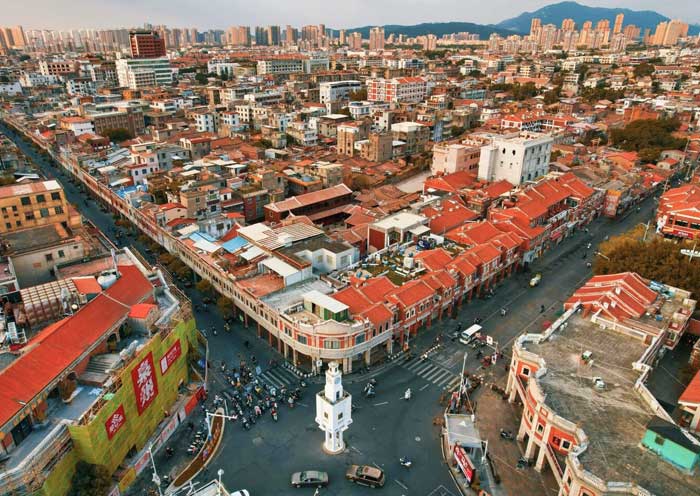
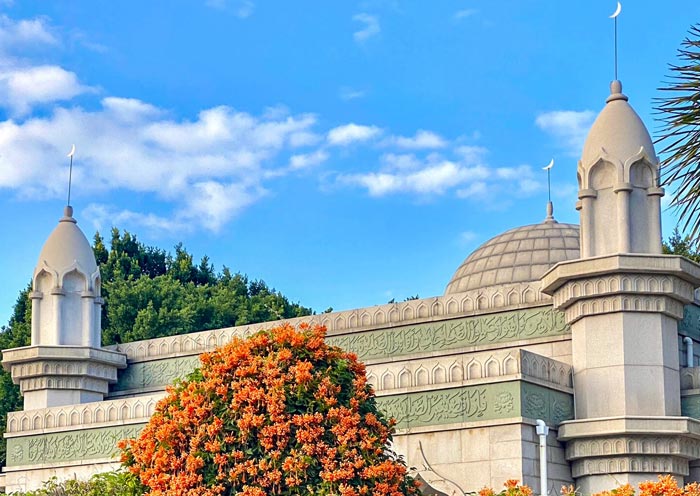
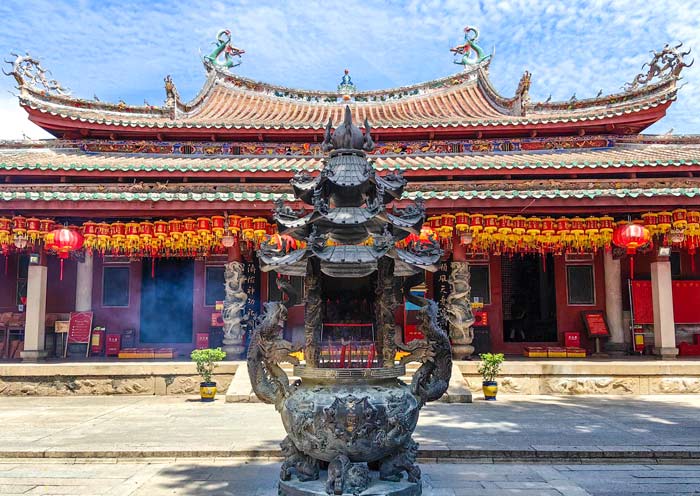
Itinerary at a Glance
Quanzhou (1 Day)
Kaiyuan Temple, West Street, Zhongshan Road, Quanzhou Confucian Temple, Tumen Street, Qingjing Mosque, Guandi Temple, Quanzhou Bay Ancient Ship Museum (optional), Luoyang Bridge (optional) or Xunpu Village (optional)
Itinerary Day by Day
This morning, head to the coastal city of Quanzhou from Xiamen City (91km, 2 hours drive). You will witness the historic Quanzhou City, which boasts a history of more than 1,750 years and was once the starting point of the Maritime Silk Route (海上丝绸之路起点). Nowadays, the name Quanzhou represents the 56th World Heritage Site of China. However, over 1,000 years ago, during the Song and Yuan Dynasties (960-1368), its old name Zayton or Zaiton City (Zaiton Harbour刺桐港) was well-known by traders from all over the world. As an international port city and one of the largest shipping ports in China, Zayton City (Citong City刺桐城) was marked by Marco Polo as “The Most Prosperous City in the World”, “the Alexandria of the East”, and “the Largest Port in the World”. Also, Quanzhou was hailed as The City of Light (光明之城) by Jacob D'Ancona. You will visit the top attractions of Quanzhou such as Kaiyuan Temple (Buddhism & Hinduism Relics), West Street, Zhongshan Road, Quanzhou Confucian Temple (Confucianism), Tumen Street, Qingjing Mosque (Islam), Guandi Temple (Taoism), Mazu Temple (Taoism; optional), Luoyang Bridge (optional) or Xunpu Village (optional). Your trip to Quanzhou will be an exploration of the Museum of World Religions including Taoism, Buddhism, Islam, Catholicism, Hinduism, Christianity, Manichaeism, and Judaism. It is said that in Quanzhou, you can find over 6,000 temples and more than 500 deities. Take your time to have a bite of local Hokkien Culture (Minnan Culture闽南文化) through Minnan Architecture and Minnan food.
Today, you will enjoy a Quanzhou Citywalk by exploring the Kaiyuan Temple (World Heritage) first. Originating in the Tang Dynasty (686 AD), with a history of over 1,300 years to date, it is the largest Buddhist temple in Fujian Province. Along the central axis of the temple, you can visit the Purple Cloud Screen (a decorative wall), the Shanmen Hall, the Baiting Pavilion, the east and west corridors, the Mahavira Hall, the Ganlu Ordination Altar, the Scripture Repository, as well as the two Song Dynasty stone pagodas towering over the east and west squares, namely the Zhenguo Tower (East Tower镇国塔) and the Renshou Tower (West Tower仁寿塔), which are landmarks and symbols of Quanzhou. Stepping into the temple, you will see eight centuries-old banyan trees, with 17 stone steles and pagodas of different forms from the Tang, Song, and Ming dynasties placed beneath them. You will come across a famous couplet: "This place was once called the Land of Buddha, where saints fill every street. 此地古称佛国,满街都是圣人" It was composed by Zhu Xi (朱熹1130-1200), a Neo-Confucian philosopher of the Southern Song Dynasty, and written by Master Hongyi in 1938. The Kaiyuan Temple attracts many eminent monks, and Quanzhou is renowned as the "Buddhist Land of Southern Fujian泉南佛国." Combined with Quanzhou's historical prominence in culture and education, both the terms "Land of Buddha" and "saints" have their origins, making this couplet widely known. Master Hongyi (弘一法师), originally named Li Shutong (李叔同1880-1942), was a renowned musician, art educator, calligrapher, and one of the pioneers of Chinese drama. His lyrics of the song "Farewell" (《送别》) are well-known. On the west side of the temple, there is the Hongyi Memorial Hall where you can learn more about his life and achievements.
One highlight of the Kaiyuan Temple is its Mahavira Hall (大雄宝殿), which was rebuilt by Zheng Zhilong (郑芝龙), the father of the national hero Zheng Chenggong (郑成功), in 1637 and has been preserved to this day. During its reconstruction, materials from nearby abandoned Hindu temples, such as stone columns and pedestals, were used, making the Kaiyuan Temple the only Buddhist temple in China with remnants of Hinduism. On the pedestals and some of the stone columns in the Mahavira Hall, you can see carvings of lions and human-faced lions, which represent one of the incarnations of the Hindu deity Vishnu. They serve as historical witnesses to the prosperous maritime trade and cultural exchanges between Quanzhou and foreign countries during the Song and Yuan dynasties. The Mahavira Hall is also known as the "Hall of Hundred Pillars百柱殿",although it actually has 86 pillars. The ancient craftsmen used the technique of reducing pillars to increase the interior space of the hall, displaying remarkable ingenuity. Furthermore, the hall houses five rare giant Buddha statues representing the east, south, west, north, and center, collectively known as the Five-Direction Buddhas (五方佛), which are truly awe-inspiring.
Don't miss the opportunity to admire the East and West Pagodas (东西塔) of the Kaiyuan Temple up close. They are the tallest surviving pair of ancient stone pagodas in China. The East Pagoda reaches a height of 48 meters, while the West Pagoda stands at 45 meters, equivalent to a 16-story residential building today. The two pagodas are situated on the east and west sides of the Kaiyuan Temple's central axis, approximately 200 meters apart. The East Pagoda is more delicate in design and was completed 10 years later than the West Pagoda. The two pagodas are five-story octagonal wooden-structure towers, entirely constructed with granite stone carvings. Each pagoda weighs over 10,000 tons and has withstood over 700 years of wind, rain, and even earthquakes up to magnitude 8 and severe typhoons. It is not only the sturdy architectural structure of the pagodas that is impressive but also the stone carvings on their exteriors. Each level is adorned with 16 Buddha statues, totaling 80 statues in each pagoda. Out of the 160 statues between the two pagodas, surprisingly, over 70% depict "foreigners", showcasing the inclusive and diverse style of Quanzhou. One of the most distinctive stone carvings is found on the West Pagoda, featuring a male Guanyin Bodhisattva and Hanuman (a war god in Hinduism), said to be one of the prototypes for Monkey King (孙悟空) from the Chinese novel "Journey to the West西游记".
Don't forget to visit the Quanzhou Bay Ancient Ship Museum (泉州湾古船陈列馆Closed on Mondays), which is a branch of Quanzhou Maritime Museum (泉州海外交通史博物馆). You can also take a look at the ancient mulberry tree in the temple, which is over 1,300 years old. It is said that this tree, which bloomed white lotus flowers when Huang Shougong (黄守功) offered the land to build the Kaiyuan Temple, is the origin of the name "Lotus Dharma Realm莲花道场" associated with the temple. Every month on the 26th day of the lunar calendar, the Kaiyuan Temple holds the "Diligent Buddha Festival" (勤佛节). During this time, the temple's monks led the worshippers in chanting scriptures and praying for blessings while circumambulating the temple. The temple and even the streets outside, especially West Street, are crowded with people during this festival.
Walking from the Kaiyuan Temple to West Street (西街), you will understand why Quanzhou is a city where half is filled with vibrant bustle, and half is home to Sages and immortals (半城烟火半城仙). Amidst the busy atmosphere of West Street, the thousand-year-old temple feels like a dream. Looking up and seeing the West Pagoda, imagine that you walked on this street a thousand years ago and saw Arabs in robes, Indian monks, samurais of Japan, and traders from Persia working or living here. If you visit West Street between Dec. and Apr., you might be able to see the fiery red flowers of the Erythrina tree in bloom. As the largest port in Asia during the Song (960-1279) and Yuan (1271-1368) dynasties, Quanzhou City was once surrounded by Erythrina trees (Citong tree), earning it the nickname "Zayton City刺桐城" among Arab sailors. Zayton is the sound of Citong (刺桐) in the Minnan dialect (Hokkien dialect闽南话). That is why during the Middle Ages, Quanzhou gained fame in Europe, Africa, and the Middle East as the "Zayton Port "(Zayton Harbor刺桐港). With trade links and cultural exchanges with nearly 100 countries and regions, Quanzhou port exported porcelain, silk, tea, and iron, and imported spices such as pepper, medicinal materials, and pearls via the maritime trade route. Nowadays, Quanzhou has designated the Erythrina tree flower (刺桐花) as the Quanzhou City Flower. There are no tall buildings on West Street (lower than the two pagodas) because the East and West Pagodas also served as navigational landmarks in ancient times. The people of Quanzhou wanted the returning sailors to be able to see the East and West Pagodas from afar, as seeing the pagodas meant they were home. There are many nice spots on West Street to take great photos of the pagodas. West Street is full of vibrant life and is a perfect place to admire centuries-old Minnan architecture and taste local Minnan food.You can chat with the local Minnan people (Hokkien people) in the alleyways and uncover more about Minnan culture through a well-know Hokkien song called “Put in the Effort, You Will Win” (爱拼才会赢).
Quanzhou is a famous Chinese gourmet city, you can enjoy your lunch on West Street with tasty Quanzhou food such as Oyster Omelette (蚵仔煎), Mianxianhu (noodle soup with vermicelli面线糊), Ginger Duck (姜母鸭), Vinegar Pork (醋肉), Zongzi (sticky rice dumpling), Sea Worm Jelly (土笋冻), four-fruit soup (四果汤), and peanut soup.
After lunch, stroll to the Clock Tower (钟楼), a landmark building of Quanzhou, which is in Western architectural style blended with Hokkien characteristics. The Clock Tower is located at the intersection of East Street, West Street, Zhongshan South, and North Road. It was built in 1934 and is 13.8 meters tall. The Clock Tower is a fond memory for the older generation of Quanzhou people because in the past without cell phones, they often made appointments to meet there. The Clock Tower has now become a famous check-in spot. Standing here, you can feel time travel - looking ahead are the ancient streets and pagodas that retain the Tang and Song dynasties' charm, and turning back is the Republican-era Minnan-style arcade streets.
Then, you will follow Zhongshan Road (中山街) to reach Quanzhou Confucian Temple (World Heritage泉州府文庙 Closed on Mondays). It is the largest Confucian temple complex in southeastern China, featuring ancient architecture from the Song, Yuan, Ming, and Qing dynasties. It perfectly combines the characteristics of Central Plains culture and the art of ancient Minnan architecture. It was once the highest seat of learning in Quanzhou, producing 2,454 successful candidates in the imperial examinations, 8 top scholars in literary and military fields, and over 20 prime ministers. The inscription "Pangong" (泮宫) on the entrance gate tower was written by Wu Lu (状元吴鲁), the last top scholar in Fujian. The gate tower was built in 1914 and is the earliest cement structure in Quanzhou. The main gate of the Confucian temple is called the "Dacheng Gate" (大成门), it consists of three gates, with the middle one being the authentic Dacheng Gate that only significant ceremonies or top scholars were allowed to pass through. After the Dacheng Gate, there is a pond called Panchi (泮池) and a bridge called Panqiao (泮桥). The Panchi is connected to the inner river of Quanzhou, ensuring water storage and fire protection functions during both rainy and dry seasons. The Panqiao, built in 1349 (Ming Dynasty), is approximately 26.6 meters long and features four stone elephants carved on the side pillars, symbolizing peace. The bridge is paved with 72 stone slabs, representing the 72 sages of Confucian education. Proceeding further is the main hall of the Confucian temple, called the "Dacheng Hall" (大成殿), which serves as the central place for the worship of Confucius. "Dacheng" (大成) signifies praising Confucius as the expert of all knowledge in the universe. A ceremony to honor Confucius is held here every year on September 28th. The unique feature of the roof of the hall is the curved ridge with two upturned corners and two forked ends resembling swallowtails, known as "Yanwei Ridge燕尾脊," which is distinctive to Minnan architecture. The Dacheng Hall follows the typical double-eave hip roof structure of the Song Dynasty and is the only existing Confucian temple in Quanzhou with this architectural style (on par with the Forbidden City). It is covered with yellow-glazed tiles, the highest specification in ancient Chinese architecture. The exterior of the hall is adorned with six relief dragon columns, while the interior features two relief dragon golden columns. Inside the Confucian temple, there is a well called "Fuzi Quan" (夫子泉井), where in ancient times, scholars from Quanzhou would drink a ladle of water before setting off to the capital for the imperial examinations, hoping to achieve good academic results. Nowadays, students also come to pay respects to Confucius before their exams.
Walk from Zhongshan Road (中山街) to Tumen Street (400m), you will pay a visit to Qingjing Mosque (World Heritage清净寺), also known as "Masjidal-Ashab" was originally built in the Northern Song Dynasty (1009 AD). It is the oldest surviving mosque in China with an Arabic architectural style and a rare example of a mosque constructed with granite and greenstone. The phrase "You should strive for knowledge even as far as China!" is the only mention of China in the Quran (古兰经). Inspired by the Prophet, Arab merchants came to China with goods in one hand and the Quran in the other. Muslims flocked to settle in Quanzhou, and Islam began to spread eastward through maritime routes. Quanzhou is widely recognized as the birthplace of Islam's earliest arrival in China. As the oldest surviving Islamic mosque established by Arab Muslims in China, Qingjing Mosque (Qingjing Temple) serves as a precious testament to the Persian, Arab, and other Muslim merchants and communities who crossed the ocean to engage in trade during the Song and Yuan dynasties, witnessing the flourishing maritime trade in Quanzhou from the 10th to the 14th century. Today, Qingjing Mosque continues to attract numerous domestic and international Muslims who come to visit, contributing to the ongoing cultural exchange and friendship between China and the Arab world. Additionally, the 1986 TV series "Journey to the West" filmed the scene of Yu Huazhou, the transmission site, at Qingjing Mosque. (Notes: 1. When entering, please remember to wear long pants or long skirts. 2. Unauthorized entry is not allowed in the chapel.)
With another walk of 200m, you will move from Qingjing Mosque into Guandi Temple (关帝庙). You see within 1km around Tumen Street there is Confucian Temple (Confucianism), Qingjing Mosque (Islam), Guandi Temple (Taoism), which is three different religious sites coexist peacefully. The most captivating aspect of the city of Quanzhou lies in its open and inclusive spirit, embracing cultures from around the world and allowing people of different cultural backgrounds to coexist within the same city. Guandi Temple housing the deities Guan Yu (关羽) and Yue Fei (岳飞), is the most prosperous temple in terms of incense burning in Quanzhou. It is believed that the temple's fortune-telling sticks are exceptionally accurate, and local residents often come here to seek divination when facing indecisiveness. The temple attracts a large number of worshippers. Guanyue Temple is a distinctive temple architecture of Minnan. The colorful roofs and the exquisite porcelain carvings on the ridge are awe-inspiring. The dragon carvings, as well as the vivid depictions of flowers, birds, and animals, are truly worth seeing.
If time permit, you can choose to visit one of the following spots according to your interest.
Optional tours around Quanzhou:
1. Xunpu Village (浔埔村), 10 km away, 0.5 hour’s drive
Xunpu Village (蟳埔村) is a small fishing village famous for the unique headwear called "Zan Hua" (intangible world heritage) worn by Xunpu women and the distinctive Minnan-style houses known as "Oyster Shell Houses (蚵壳厝)". Why do Xunpu women (蟳埔女) wear Zan Hua (簪花)? It is said that the headwear adorned with a flower crown and ivory chopsticks has been passed down from Central Asia since the Song Dynasty (the locals may be descendants of ancient Arabs). Xunpu women, with their flower-adorned headwear, create a beautiful sight, and it gained even more popularity after Zhao Liying (赵丽颖), a famous actress, portrayed a Xunpu woman. Why there is Oyster Shell House? Xunpu is an important port and the starting point of the Maritime Silk Road in Quanzhou. Most merchant ships loaded with silk and porcelain set sail from Xunpu to Nanyang (南洋Southeast Asia), then traversed the Indian Ocean and the east coast of Africa before unloading their cargo on the northern coast. When returning cargo ships sailed without any goods, the unstable center of gravity would hinder navigation. So, the crew would gather oyster shells scattered along the seashore and use them as ballast on the ship. Upon returning, these shells would be piled up on the shores of Xunpu. The locals then utilized the oyster shells to build houses. It was later discovered that houses made of oyster shells provided warmth in winter, coolness in summer, and were resistant to moisture and earthquakes, hence the saying "bricks for a thousand years, shells for ten thousand years." In Xunpu Village, you can not only experience unique folk culture but also have the chance to encounter breathtaking sunsets.
2. Luoyang Bridge (洛阳桥), 17 km away, 1hour’s drive
Luoyang Bridge (World Heritage) is the earliest surviving stone bridge with a beam structure that crosses the sea. It is renowned as the "First Bridge of the Sea" and one of the four great ancient bridges in China. There is an old saying in Quanzhou: "Standing like the East and West Pagodas, lying down like Luoyang Bridge (Wanan Bridge)". Due to the fact that only the East and West Pagodas and Luoyang Bridge remained intact after the powerful earthquake of magnitude 8 in 1604. Furthermore, the famous contemporary writer, poet, scholar, and translator Yu Guangzhong (1928-2017余光中) wrote in his work "Luoyang Bridge (洛阳桥)": "How many springs have the Erythrina tree flowers bloomed, how many years have the East and West Pagodas faced each other, how many people have walked across Luoyang Bridge, and how many ships have sailed out of Quanzhou Ba". This illustrates the significance of this Luoyang Bridge, which is not located in Luoyang, in people's hearts. Walking on Luoyang Bridge, which was completed in 1059 under the supervision of Quanzhou's prefect Cai Xiang (蔡襄), you can step from the ancient banyan tree at the bridgehead towards the north bank, immersing yourself in the wisdom of ancient bridge construction during the Northern Song Dynasty. For example, Cai Xiang invented the method of cultivating oysters on the foundation stones to strengthen the bridge piers. Luoyang Bridge has remained sturdy and operational for over 900 years, thanks to the contribution of these oysters. Standing on the bridge, you can see the city from a distance, the river up close, vast mudflats, and forests. Coupled with human involvement, Luoyang Bridge has become the most scenic and fascinating among the three bridges (world heritage sites) along the Maritime Silk Road.
After the 1 Day Quanzhou Tour From Xiamen, it is time to escort you back to your hotel or transfer you to the train station to bid you farewell. Quanzhou has both an airport and a high-speed train station. You can choose to depart from Quanzhou or return to Xiamen for your departure.
Thank you for choosing Asia Odyssey Travel (AOT) for your China tour. We are always dedicated to serving you and look forward to welcoming you again for your future trips to China/Asia.
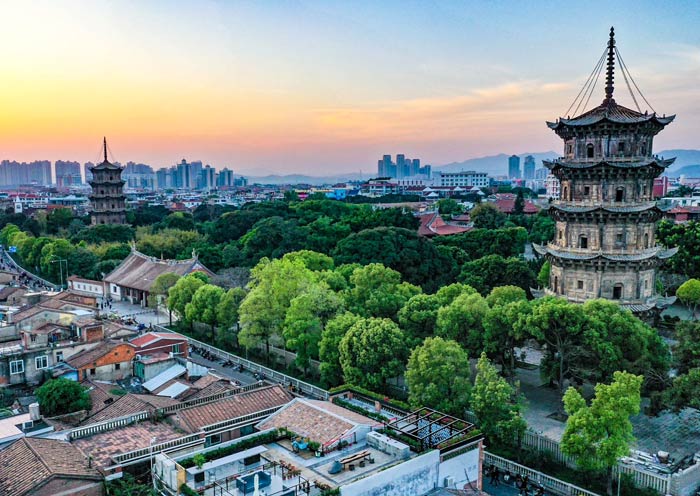
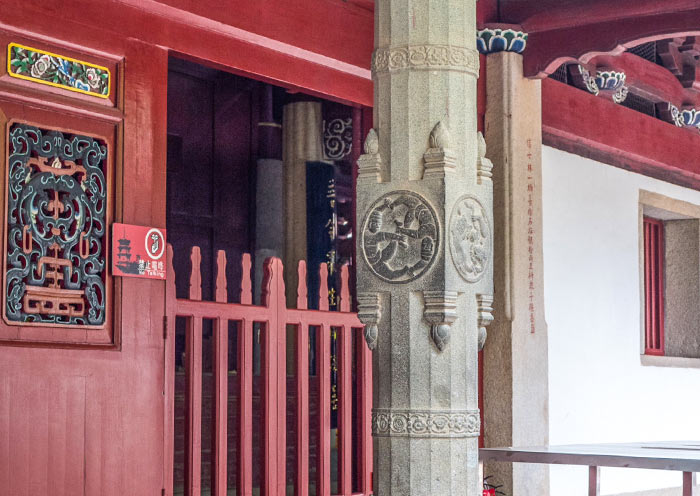
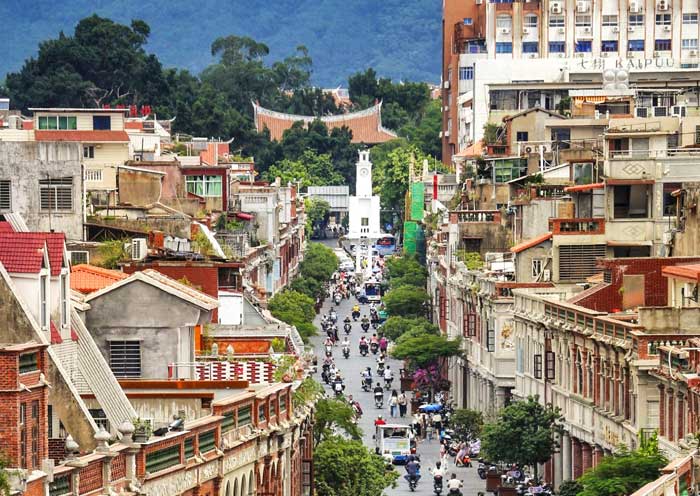
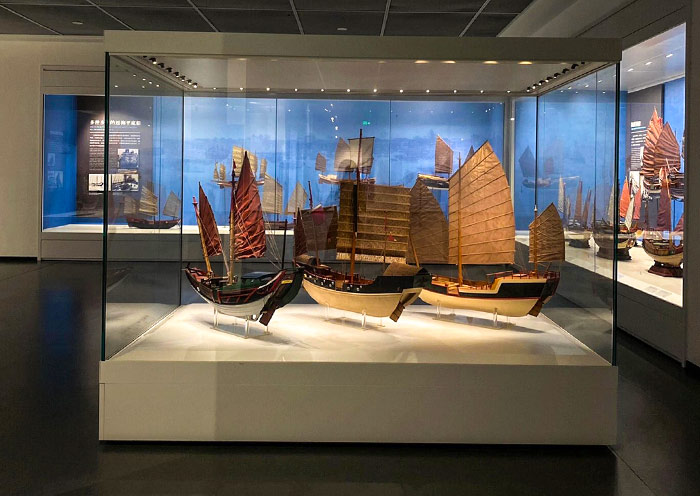
Price: What’s Included & What’s Excluded
What’s Included?
What’s Excluded?
Important Trip Notes for Booking a Private China Tour
Accommodation & Hotel Condition for Your China Tour
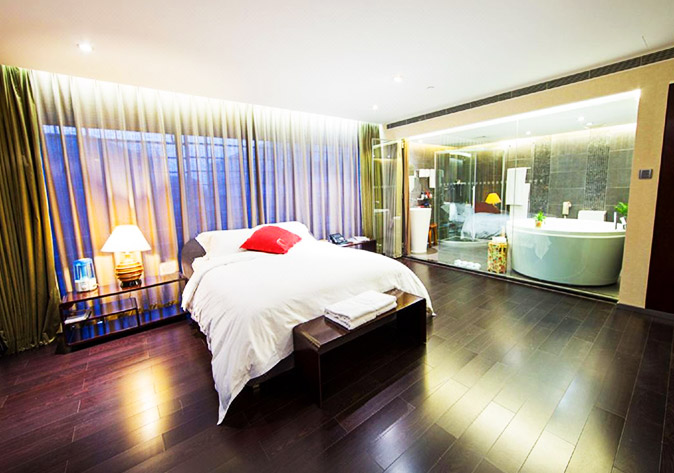

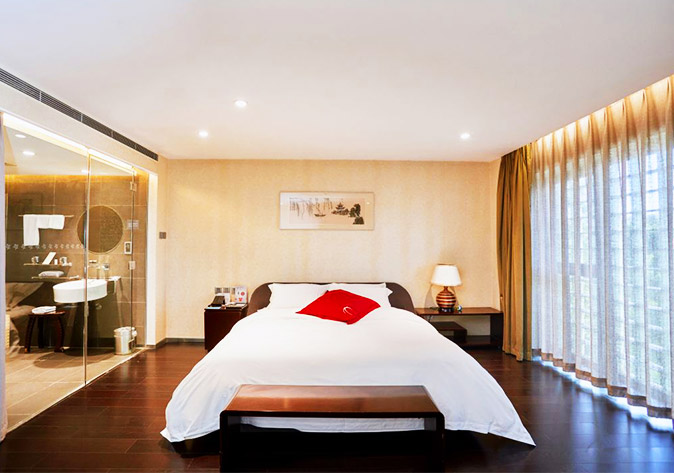
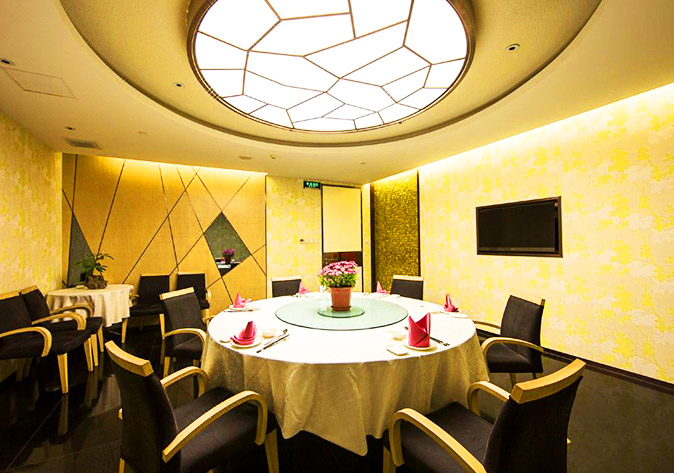
Photo Gallery for This Itinerary
Latest Fujian Tours Reviews from Our Customers

Aisha
Malaysia
Destination(s): Ningxia
Date of Experience: Sep 02, 2025
Tour Customized by: Nicole
You May be Interested in This Tour: 5 Days Classic Ningxia Tour - Shapotou Desert, Yellow River & Lost Kingdoms

Emily Johnson
USA
Expert guides and seamless logistics made our trip truly exceptional. Highly recommended! The Tengger Desert's colorful lakes were a surreal highlight after an unforgettable night camping under Shapotou's starry sky. The history, wine, and off-roading created a perfect, diverse adventure.
Destination(s): Ningxia
Date of Experience: Oct 09, 2025
Tour Customized by: Anthony
You May be Interested in This Tour: 6 Days Ningxia Odyssey Tour: Desert Camping & Off-road to Colorful Lakes

Ryan Tan
Singapore
The perfect mix of history, wine tasting, and desert adventures, especially camping in Shapotou under the stars. Highlights included the stunning Western Xia Tombs and Xige Winery. Truly unique and well-organized—highly recommended!
Destination(s): Ningxia
Date of Experience: Jun 12, 2025
Tour Customized by: Danny
You May be Interested in This Tour: 6 Days Ningxia Wine Tour with Desert Camping in Shapotou
Price: Request
(Based on a private tour for two people. Price varies depending on program, travel date, number of people.)
Free Enquiry! You don’t need to pay for the reservation.
- United States (+1)
- Australia (+61)
- Singapore (+65)
- Malaysia (+60)
- Philippines (+63)
- Canada (+1)
- Italy (+39)
- Indonesia (+62)
- United Kingdom (+44)
- Spain (+34)
- Mexico (+52)
- Hong Kong (+852)
- Thailand (+66)
- United Arab Emirates (+971)
- New Zealand (+64)
- South Africa (+27)
- Germany (+49)
- Brazil (+55)
- India (+91)
- France (+33)
- Vietnam (+84)
- The Netherlands (+31)
- Saudi Arabia (+966)
- Ireland (+353)
- Argentina (+54)
- Switzerland (+41)
- Romania (+40)
- Pakistan (+92)
- Japan (+81)
- Portugal (+351)
- Bangladesh (+880)
- South Korea (+82)
- Puerto Rico (+1)
- Türkiye (+90)
- China (+86)
- Belgium (+32)
- Qatar (+974)
- Greece (+30)
- Taiwan (+886)
- Austria (+43)
- Poland (+48)
- Israel (+972)
- Chile (+56)
- Sri Lanka (+94)
- Nigeria (+234)
- Peru (+51)
- Colombia (+57)
- Hungary (+36)
- Nepal (+977)
- Denmark (+45)
- Bulgaria (+359)
- Norway (+47)
- Slovenia (+383)
- Sweden (+46)
- Kuwait (+965)
- Costa Rica (+506)
- Ecuador (+593)
- Venezuela (+58)
- Malta (+356)
- Croatia (+385)
- Tunisia (+216)
- Czechia (+420)
- Mongolia (+976)
- Bahrain (+973)
- Mauritius (+230)
- Papua New Guinea (+675)
- Cambodia (+855)
- Dominican Republic (+1)
- Luxembourg (+352)
- Finland (+358)
- Guatemala (+502)
- Myanmar (+95)
- Maldives (+960)
- Slovakia (+421)
- Laos (+856)
- Serbia (+381)
- Brunei (+673)
- Oman (+968)
- Macao (+853)
- Panama (+507)
- Morocco (+212)
- Jordan (+962)
- Georgia (+995)
- Fiji (+679)
- Bolivia (+591)
- Lithuania (+370)
- Bahamas (+1)
- Cyprus (+357)
- Latvia (+371)
- Bhutan (+975)
- Iraq (+964)
- Iran (+98)
- Kenya (+254)
- Jamaica (+1)
- Zimbabwe (+263)
- Azerbaijan (+994)
- Uruguay (+598)
- Estonia (+372)
- Andorra (+376)
- Cameroon (+237)
- Ghana (+233)
- Kazakhstan (+7)
- Nicaragua (+505)
- Egypt (+20)
- Russia (+7)
- Albania (+355)
- Réunion (+262)
- Montenegro (+382)
- Algeria (+213)
- Afghanistan (+93)
- Martinique (+596)
- Uganda (+256)
- Honduras (+504)
- North Macedonia (+389)
- Trinidad and Tobago (+1)
- Suriname (+597)
- Antigua and Barbuda (+1)
- Zambia (+260)
- Ukraine (+380)
- Armenia (+374)
- Barbados (+1)
- Belarus (+375)
- Palestine (+970)
- Lesotho (+266)
- Moldova (+373)
- Ethiopia (+251)
- French Polynesia (+689)
- Gambia (+220)
- Guam (+1)
- Gibraltar (+350)
- Isle of Man (+44)
- New Caledonia (+687)
- El Salvador (+503)
- Comoros (+269)
- Seychelles (+248)
- Chad (+235)
- Samoa (+685)
- Cook Islands (+682)
- Palau (+680)
- Paraguay (+595)
- DR Congo (+243)
- Solomon Islands (+677)

